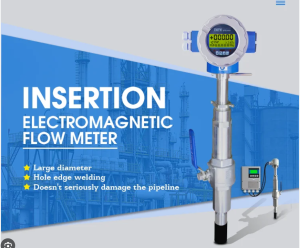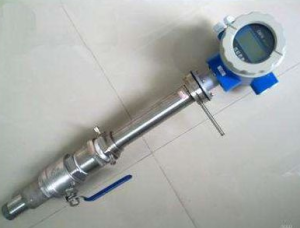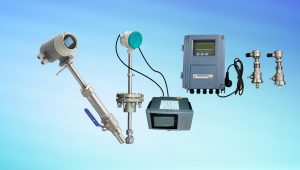Electromagnetic flow meters—commonly referred to as mag meters—are widely used across industries for accurate and reliable flow measurement of conductive liquids. But even the best mag meter can drift over time, causing inaccurate readings and process inefficiencies. That’s where electromagnetic flow meter calibration becomes crucial.
In this in-depth guide, we’ll walk you through everything you need to know about calibrating electromagnetic flow meters, including why it’s important, how it’s done, and best practices for maintaining optimal performance.
What Is Electromagnetic Flow Meter Calibration?
Calibration is the process of comparing the readings of a flow meter to a known reference standard under controlled conditions. The goal is to identify and correct any deviation from the true value to ensure the meter’s accuracy and consistency.
For magnetic flow meters, calibration typically involves:
Passing a known flow of liquid through the meter
Comparing its output with the reference system
Adjusting the meter’s internal parameters if discrepancies are found
Calibration is essential whether you’re using mag meters in municipal water systems, chemical processing, or food and beverage industries.
Why Calibration Is Important
1. Accuracy Assurance
Over time, even a well-installed mag meter can drift due to aging electronics, temperature fluctuations, or wear. Calibration helps restore accurate flow measurement, which is critical in batch processing, billing, or chemical dosing.
2. Regulatory Compliance
Many industries—such as pharmaceuticals, food & beverage, and water utilities—require periodic calibration to comply with international standards like ISO, OIML, or NIST guidelines.
3. Prevent Costly Errors
Inaccurate flow readings can lead to over- or under-dosing, faulty production batches, and even legal disputes in custody transfer applications. Calibration can save you from process downtime and financial loss.
4. Maintain System Integrity
Calibration allows early detection of potential issues like electrode fouling, sensor failure, or signal loss, improving overall equipment reliability.
When Should You Calibrate an Electromagnetic Flow Meter?
The frequency of calibration depends on multiple factors:
Industry regulations: Some sectors require annual or even quarterly calibration.
Application sensitivity: High-precision tasks (e.g., pharmaceutical dosing) demand more frequent calibration.
Environmental conditions: Harsh environments may accelerate sensor degradation.
Manufacturer recommendation: Most manufacturers suggest a yearly checkup.
General Rule of Thumb: Calibrate at least once per year, or after any significant maintenance, installation, or suspected inaccuracy.
Types of Calibration Methods
There are several proven methods for electromagnetic flow meter calibration depending on accuracy needs, budget, and facility setup.
1. Wet Calibration (Gravimetric or Volumetric)
This is the most accurate method and involves running a known volume or mass of liquid through the meter and comparing its reading to a certified standard.
Pros:
High accuracy
Simulates real-world conditions
Cons:
Requires significant setup
Time-consuming
2. Dry Calibration (Simulated Calibration)
No actual fluid is passed through the meter. Instead, electrical signals are injected into the meter’s electronics to simulate flow.
Pros:
Fast and convenient
Ideal for field calibration
Cons:
Less accurate than wet calibration
Doesn’t verify actual fluid dynamics
3. In-Situ Calibration
Performed on-site without removing the meter. Often uses reference meters or clamp-on ultrasonic devices to compare readings.
Pros:
No process interruption
Cost-effective
Cons:
Depends on reference meter accuracy
Step-by-Step: How to Calibrate a Magnetic Flow Meter
Here’s a simplified version of a typical calibration workflow using the wet method in a lab or field setup:
Step 1: Isolate the Flow Meter
Shut down the section of the process where the meter is installed. Ensure the pipe is full and the fluid is conductive and homogeneous.
Step 2: Set Up the Calibration Equipment
Use either:
A prover (a device of known volume),
Weighing tanks (for gravimetric), or
Reference flow meters (for comparative checks)
Ensure all reference equipment is traceable to national standards.
Step 3: Run the Test
Pump a known amount of fluid through the system. Record both:
The mag meter’s reading, and
The reference value
Run the test at multiple flow rates to confirm linearity.
Step 4: Compare and Adjust
Compare the readings and calculate deviation. If deviation exceeds tolerance, adjust the scaling factor or span in the transmitter electronics.
Step 5: Document the Results
Prepare a calibration certificate documenting:
Flow rates
Reference values
Deviations
Date, equipment used, and technician signature
This is important for audit trails and compliance.
Tools and Equipment Used in Calibration
To perform a precise calibration, the following tools may be needed:
Reference flow meter or weighing scale
Data logger
Stopwatch or flow timer
Pressure and temperature sensors
Calibration management software
Traceable calibration standards
Many labs use automated calibration benches, which streamline the process and reduce human error.
Common Calibration Challenges and Solutions
❌ Air Bubbles in the Fluid
Solution: Ensure pipe is full and purge the system beforehand.
❌ Fouled Electrodes
Solution: Inspect and clean electrodes before calibration.
❌ Signal Drift Due to Aging Electronics
Solution: Update firmware and recalibrate as per manufacturer instructions.
❌ Environmental Noise
Solution: Shield cables and ensure proper grounding.
❌ Incorrect Flow Profile
Solution: Maintain minimum straight pipe lengths before and after the flow meter (typically 5D to 10D).
Inline vs Lab Calibration: Which Is Better?
| Factor | Inline Calibration | Lab Calibration |
|---|---|---|
| Accuracy | Good (depends on setup) | Excellent |
| Process Downtime | Minimal | Requires meter removal |
| Cost | Lower | Higher (especially with certified labs) |
| Convenience | High | Medium to low |
Tip: For critical applications, go with lab calibration every 1–2 years and use inline verification in between.
Best Practices for Reliable Calibration
To ensure long-term accuracy and compliance, follow these expert-recommended practices:
Use certified reference standards with traceability
Calibrate across multiple flow rates, not just at one point
Keep detailed calibration logs
Perform a pre-check and post-check to verify stability
Follow manufacturer-specific procedures closely
Use calibration seals to prevent unauthorized tampering
Digital vs Analog Mag Meters: Calibration Considerations
Digital mag meters often come with self-diagnostics, making calibration easier and more reliable.
Some models offer built-in verification tools, which check internal circuitry without needing full calibration.
Pro Tip: Use devices that support remote diagnostics and cloud-based calibration tracking to simplify maintenance.
How Often Should Flow Meters Be Recalibrated?
While there’s no universal rule, here are some industry guidelines:
| Industry | Calibration Frequency |
|---|---|
| Water Utilities | Every 1–2 years |
| Chemical Processing | Every 6–12 months |
| Food & Beverage | Annually or per batch |
| Pharmaceuticals | Quarterly or per FDA guidelines |
| Oil & Gas (Custody Transfer) | Before every transfer or monthly |
Always consult with your QA team and regulatory body to define the right schedule.
Conclusion
Electromagnetic flow meter calibration is more than a routine task—it’s a critical quality assurance process that ensures accurate, reliable, and compliant flow measurement across diverse industries. Whether you use wet calibration for precision or dry verification for convenience, keeping your mag meters in top shape helps minimize risk, optimize production, and support regulatory compliance.
By following proper calibration techniques, using certified equipment, and documenting everything carefully, you can extend the life of your equipment, reduce process variability, and gain trust in your measurement systems.
Don’t leave your accuracy to chance—make calibration a core part of your flow measurement strategy.




